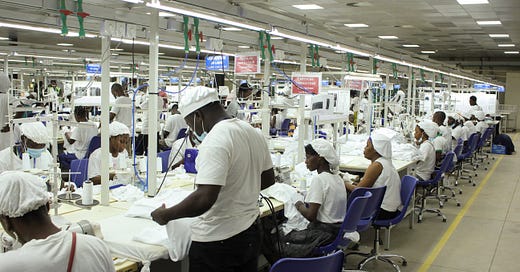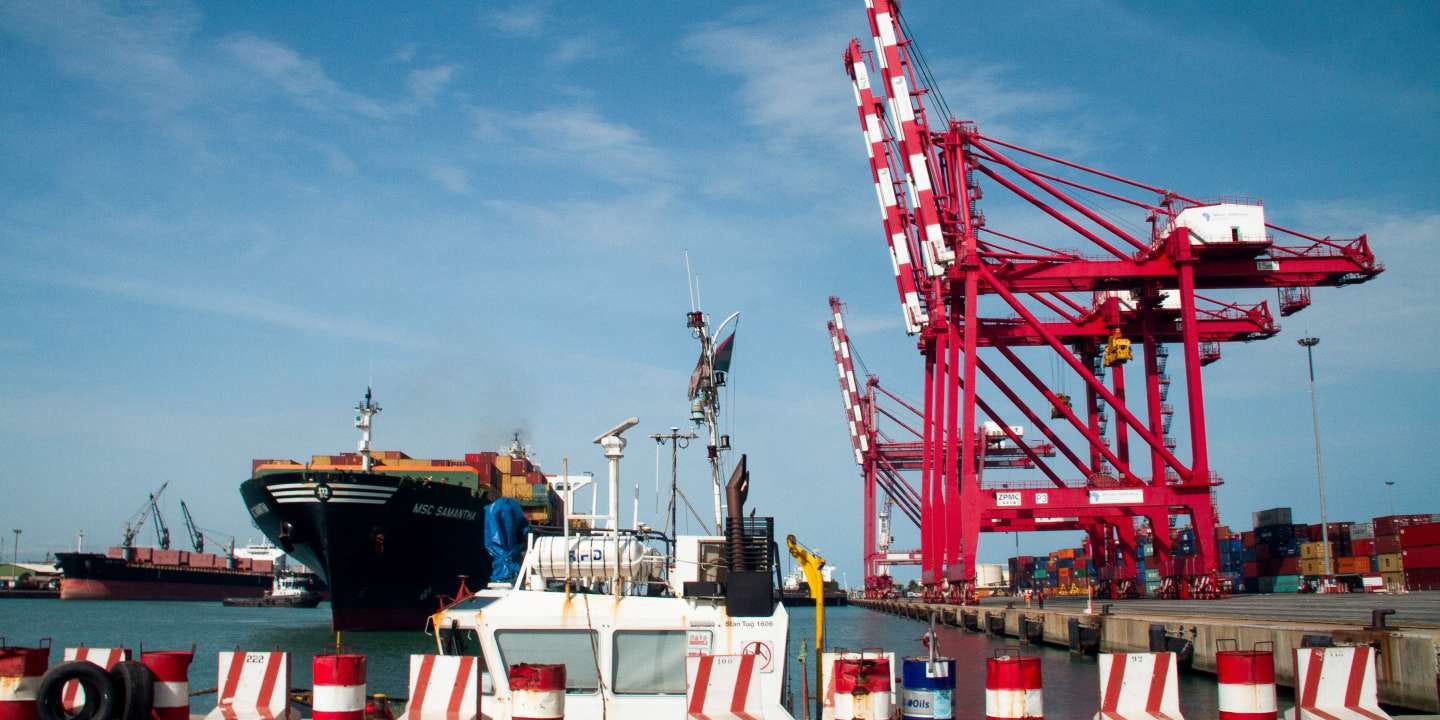Pulse54: Small country, big dreams
Benin, a country of 13 million people in West Africa, is turning its cotton farms into a big success story. Here's how broad reforms and projects are transforming the French-speaking nation.
Hello folks!
Welcome to another edition of Pulse54 - your first word on what’s old and new in Africa’s business and investment landscape - delivered twice a month.
If this email was forwarded to you, subscribe to get the next one directly in your inbox.
This week, our first in a series of articles on the WAEMU economies, we look into how a small nation in the region is betting on textiles, art, and technology to turn around its fortunes.
Now let's dive in.
In the sweltering heat of a June afternoon in Cotonou, Benin's bustling economic capital, a group of workers at the Glo-Djigbé Industrial Zone (GDIZ) gather around a shipping container with anticipation.
Inside were 80,000 children's leggings, freshly manufactured and ready for their journey to France.
This shipment, bound for the French retail giant KIABI, marked a significant milestone – the first export of "made in Benin" clothing to Europe.
For Létondji Beheton, managing director of GDIZ, this moment was the culmination of years of planning and a testament to Benin's ambitious vision.
"Instead of selling commodities raw, we will process them in Benin," he said, echoing the sentiments of a nation ready to weave its economic destiny.
A cotton revolution
Benin, a small francophone West African nation of about 13m people, has long been known for its cotton.
In recent years, it emerged as Africa's leading cotton producer, with an annual production of 728,000 tonnes in 2020-2021.
Traditionally, most of this “white gold” was exported raw, primarily to Bangladesh, leaving little value added to the local economy.
But things are changing.
The government of President Patrice Talon, himself a former cotton magnate, has embarked on an ambitious reform course to transform Benin from a raw material exporter to a manufacturer of finished goods.
At the heart of this vision is the GDIZ, a sprawling industrial complex that aims to process cotton and other agricultural products into textiles and garments for export to Europe, Asia, Africa, and the United States.
The impact could be transformative.
The initiative aims to create 300,000 jobs by 2030, with up to 250,000 in spinning, weaving, and garment manufacturing alone.
It also expects to increase exports by $5bn to $10bn within a decade and boost Benin's GDP by $4bn to $7bn by 2030.
Beyond cotton: A diversified vision
While textiles are at the forefront, Benin's economic transformation extends far beyond cotton.
The government is pursuing a multi-pronged approach to diversify the economy and boost growth.
One key focus is improving infrastructure.
Projects are underway to upgrade the country's port, airport, roads, and energy sector to international standards.
The Port of Cotonou, already a vital link for landlocked neighbors like Niger, Burkina Faso, and Mali, is undergoing a major expansion to increase its shipping capacity.
And as internet penetration deepens, digital technology and services are taking root in Benin.
As of December, Benin had 6.9 million unique mobile internet subscribers, per data from the telecom regulator ARCEP.
This reflects an internet penetration rate of 55% while over 67% of the population uses a mobile phone.
These figures come on the back of notable growth in recent years.
Between 2022 and 2023, the number of SIM cards connected to the networks of MTN, Celtiis, and Moov Africa increased by 12.3% while those specifically with access to mobile internet rose by 12.4%.
As in many other African nations, the growing adoption of the internet has been an enabler for digital services.
In Benin, it’s becoming increasingly popular to store money in a mobile wallet and access public services online.
In 2021, the government launched an interoperability platform through which citizens have access to more than 250 public services.
The country has also created a digital school to support the deployment and maintenance of very high-speed networks and the development of digital uses in the economy.
It also boasts startup incubator Sèmè-One and several new agencies that support digital initiatives in the country.
More so, digital financial services have accelerated in recent years.
Mobile money adoption surged 327% in the past five years with the number of accounts growing from 2.6m at the end of 2018 to 11.1m in 2023.
And people are not just opening accounts.
A total of 2.07bn transactions were made in 2023, an increase of 920% from 202.6m recorded in 2018. Transaction value amounted to over CFA 10.6bn ($17.3m) from CFA 2b over the five years.
Another pillar of Benin's economic strategy is culture and tourism.
The government plans to invest €250m between 2016 and 2026 to make culture the economy's second pillar after agriculture.
Four new museums are planned across the country, including the Musée International du Vodun in the capital Porto-Novo, which aims to showcase the rich heritage of the Vodun religion.
A new cultural quarter in Cotonou will host a contemporary art museum, sculpture garden, and crafts village, among other attractions.
Stable economic landscape and reforms
Benin's economic transformation is taking place against a backdrop of robust growth and macroeconomic stability.
Despite global headwinds from the COVID-19 pandemic and the war in Ukraine, Benin's economy grew by 6.3% in 2022 and is projected to maintain an average growth rate of 6.3% between 2024 and 2026.
This growth is underpinned by a series of structural reforms implemented since 2016 when President Talon came into office.
The government has focused on improving the business environment, enhancing tax administration, and promoting private sector development.
These efforts have borne fruit, with Benin moving up to 149 in the World Bank's Ease of Doing Business rankings, from 153 in 2018.
The country is also benefiting from its membership in the West African Economic and Monetary Union (WAEMU).
As part of this eight-country bloc, Benin uses the CFA franc, which is pegged to the euro, providing currency stability.
The country also enjoys preferential trade access to the European Union market under the Everything But Arms (EBA) initiative.
Amid major progress, challenges remain
Poverty remains high, with about 38.5% of the population living below the poverty line.
While the official unemployment rate is low at 1.5%, underemployment stands at over 70%, and more than 90% of workers are in informal employment.
Climate change poses a significant threat, particularly to the agricultural sector.
Cotton farmers are already noticing changes in weather patterns, which could impact yields and livelihoods.
The country's dependence on Nigeria, its giant neighbor and main trading partner, is both an opportunity and a vulnerability. This is apparent in recent border closures and changes in Nigeria's fuel subsidy policy, which negatively impacted the Beninese economy.
Security concerns in the northern regions, influenced by instability in the broader Sahel region, present another challenge.
Looking ahead: A new economic frontier
Despite these challenges, the mood in Benin is one of optimism.
The textile industry, long seen as a stepping stone to industrialization, could be the key to unlocking Benin's economic potential.
As Matthias Knappe of the International Trade Centre notes, "The textile industry has been, and is, in many countries the starting point for industrialization."
For young Beninese like Muriel Akouewanou, who found employment in the new textile factories after two years of unemployment, these developments represent hope for a brighter future.
"My dream is to become a textile engineer in Benin's emergent industry," she says, embodying the aspirations of a new generation of Beninese ready to seize the opportunities of their country's economic renaissance.
As Benin continues its journey from cotton fields to couture, from raw exports to value-added manufacturing, it offers a compelling case study of economic transformation in Africa.
With its strategic location, stable political environment, and bold reform agenda, this small West African nation is positioning itself as an attractive destination for investors looking to be part of Africa's next growth story.
The road ahead will not be without challenges, but if Benin can successfully navigate the complexities of global markets, climate change, and regional dynamics, it may well become a model for economic diversification and sustainable development in Africa.
From the bustling port of Cotonou to the cotton fields of Houegnonkpa, a new chapter in Benin's economic history is being written – one thread at a time.
Did you enjoy reading this?
Let us know your thoughts on Benin’s economic transformation in the comments.








